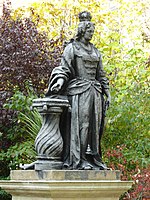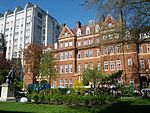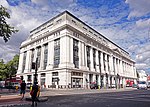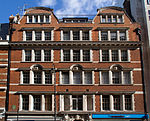St George the Martyr, Holborn
1706 establishments in England18th-century Church of England church buildingsBuildings and structures in HolbornChurch of England church buildings in the London Borough of CamdenChurches completed in 1706 ... and 7 more
Grade II* listed buildings in the London Borough of CamdenGrade II* listed churches in LondonHoly Trinity Brompton plantsJohn Buonarotti Papworth buildings and structuresLondon church stubsUnited Kingdom Anglican church building stubsUse British English from February 2015

St George the Martyr Holborn is an Anglican church located at the south end of Queen Square, Holborn, in the London Borough of Camden. It is dedicated to Saint George, and was originally so-called to distinguish it from the later nearby church of St. George's Bloomsbury, with which it shared a burial ground (now St George's Gardens). While the historical name remains its formal designation, it is today known simply as St George's Holborn.
Excerpt from the Wikipedia article St George the Martyr, Holborn (License: CC BY-SA 3.0, Authors, Images).St George the Martyr, Holborn
Queen Square, London Bloomsbury (London Borough of Camden)
Geographical coordinates (GPS) Address External links Nearby Places Show on map
Geographical coordinates (GPS)
| Latitude | Longitude |
|---|---|
| N 51.521 ° | E -0.1224 ° |
Address
St George the Martyr
Queen Square
WC1N 3AH London, Bloomsbury (London Borough of Camden)
England, United Kingdom
Open on Google Maps










